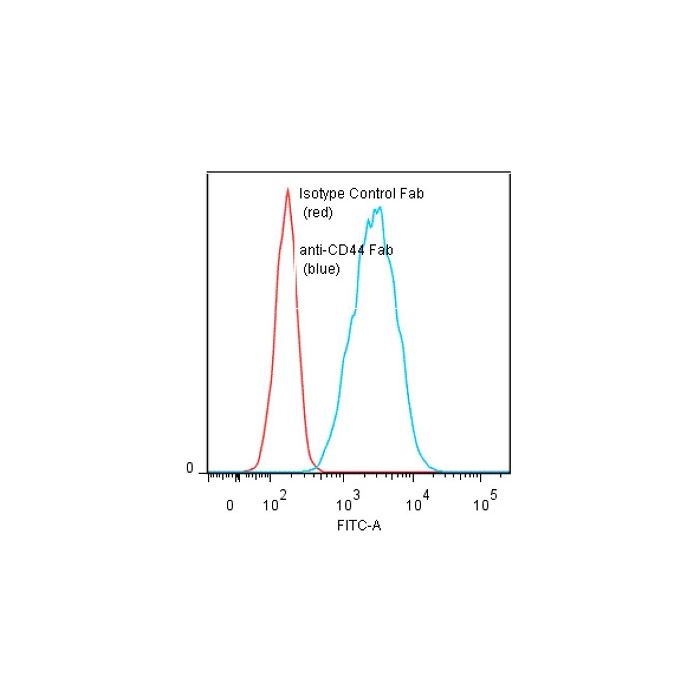Cookie Policy: This site uses cookies to improve your experience. You can find out more about our use of cookies in our Privacy Policy. By continuing to browse this site you agree to our use of cookies.
Ancell
anti-CD44 (human), mAb (BU52) (Fab)
As low as
1416
CHF
CHF 1’416.00
In stock
Only %1 left
ANC-193-580100 µgCHF 1’416.00

Figure 1: Binding of anti-CD44 Fab + GAM/FITC to human Molt-4 cells. Method: Five x 10^5 cultured human Molt-4 cells were incubated 45 minutes on ice with 80 µl of anti-CD44 Fab at 5 µg/ml. Cells were washed twice and incubated with 2nd reagent goat anti-Mouse IgG/FITC (#ANC-232-011), after which they were washed three times, fixed and analyzed by FACS. Cells stained positive with a mean shift of 1.28 log10 fluorescent units when compared to a Mouse IgG1 Fab (#ANC-278-580).
| Product Details | |
|---|---|
| Synonyms | CDw44; Eipican; Extracellular Matrix Receptor III; ECMR-III; HUTCH-I; Hermes Antigen; Hyaluronate Receptor; Heparan Sulfate Proteoglycan; Phagocytic Glycoprotein 1; PGP-1 |
| Product Type | Monoclonal Antibody |
| Properties | |
| Clone | BU52 |
| Isotype | Mouse IgG1κ |
| Immunogen/Antigen | Human peripheral myeloma cells. |
| Label/Conjugates | Fab |
| Application |
Flow Cytometry Immunoprecipitation Western Blot |
| Crossreactivity | Human |
| Specificity |
Antibody clone BU52 recognizes epitope 1 of the CD44 molecule. |
| Formulation | 50 mM Sodium Phosphate pH 7.5, 100 mM Potassium Chloride, 150mM NaCl. |
| Isotype Negative Control | |
| Other Product Data |
Click here for Original Manufacturer Product Datasheet |
| Declaration | Manufactured by Ancell Corporation. |
| Shipping and Handling | |
| Shipping | BLUE ICE |
| Short Term Storage | +4°C |
| Long Term Storage | +4°C |
| Handling Advice | Avoid freeze/thaw cycles. |
| Use/Stability | Stable for at least 1 year after receipt when stored at +4°C. |
| Documents | |
| Product Specification Sheet | |
| Datasheet |
 Download PDF Download PDF |
Description
Human CD44 molecules appear to serve as lymphocyte adhesion molecules with numerous functions in extracellular matrix binding, cell migration, hemopoisis and lymphocyte homing.






